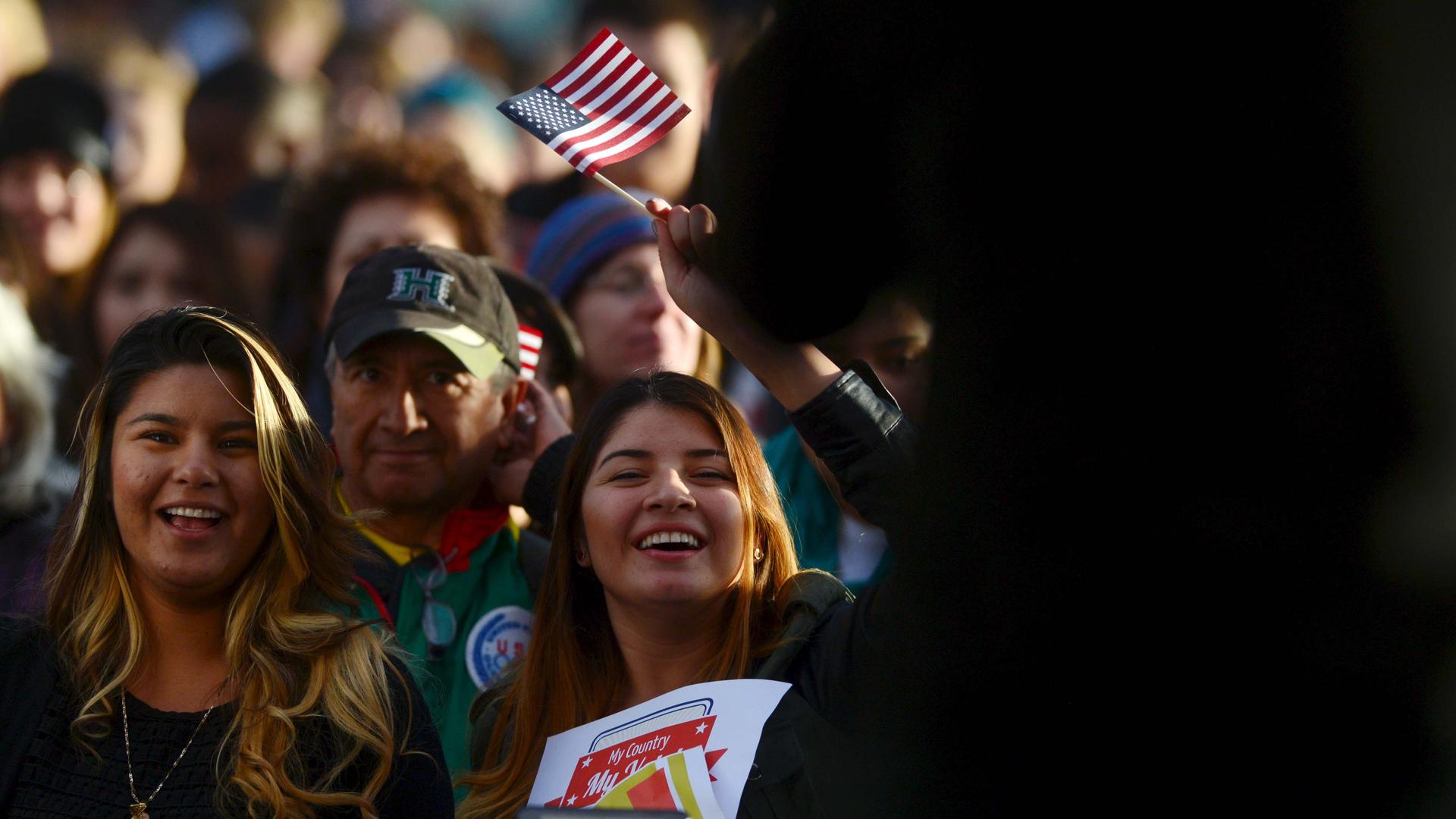This story is part of “Every 30 Seconds,” a collaborative public media reporting project tracing the young Latino electorate leading up to the 2020 presidential election and beyond.
Women vote at higher rates than men across all racial and ethnic groups in the US. That gap is particularly wide for Latino voters.
The key to winning the Latino electorate, experts say, is Latinas.
Latinas’ voting power goes beyond their individual votes: They’re likely to encourage friends and family to vote, too. That’s why campaigns and organizations should target them, experts say.
In Milwaukee, Christine Neumann-Ortiz, founding executive director of Voces de la Frontera, is harnessing Latina women to help get more Latinos interested in voting. The immigrants’ and workers’ rights group is creating networks — among families, co-workers and neighbors — to register Latinos and make sure they vote early, especially this November.
Neumann-Ortiz says Latinas are key to creating and maintaining those connections. Women in households tend to rally around specific issues such as health care, education and immigration reform, she says.
“Disproportionately, women actually care about these issues,” she said.
And their support — or disapproval — is much likelier to translate into votes.
The path to victory in November cannot afford to ignore the Latino vote. A record 32 million people who identify as Latino will be eligible to vote in the 2020 presidential election, making Latinos the nation’s largest minority voter group for the first time, according to the Pew Research Center. Two-thirds of Latino eligible voters live in five states, several of which are battlegrounds: California, Texas, Florida, New York and Arizona.
Related: Every 30 seconds, a young Latino in the US turns 18. Their votes count more than ever.
Stephanie Valencia, co-founder and president of EquisLabs, a polling firm, says the firm’s research reflects Latinas’ power and potential. Latinas tend to vote at lower rates than women from other racial and ethnic groups. But their promise as mobilizing forces has to do with culture.
“The role that Latinas play in our communities and our families, they’re our matriarchs, they’re the glue that holds our families and our communities together,” Valencia says.
“The role that Latinas play in our communities and our families, they’re our matriarchs, they’re the glue that holds our families and our communities together,” Valencia said.
That’s why presidential campaigns need to pay a closer look at the power of the Latina vote and maintain it, she says.
“We believe that they [Latinas] will not just turn out to vote themselves, but that they will organize and engage others around them to go and vote as well,” Valencia said.
Related: Can Biden turn out Latinos to vote? Advocacy groups aren’t sure.
If they’re voting with a specific issue in mind, Latinas do show up at the polls, says Christina Bejarano, a gender studies professor at Texas Woman’s University in Dallas.
Bejarano says compared to their male counterparts, Latinas tend to have higher education levels, pay more attention to politics and have higher naturalization rates. Latinas also tend to be a bit more liberal and more supportive of Democratic candidates, she says.
The Democratic Party has taken notice of this trend. Former presidential candidate Hillary Clinton’s campaign in 2016 courted Latina voters and ran Mujeres for Hillary, a campaign within a campaign. But some researchers say that outreach wasn’t strategic enough.
Ultimately, Clinton lost the general election. She won the Latino vote overall but underperformed compared to former President Barack Obama’s support from Latinos in 2012.
One thing is clear from past elections, Bejarano says: Too often, efforts to woo Latinas are an afterthought when it should be part of campaign strategies from day one.
Related: Amid coronavirus, grassroots groups move online to capture Latino vote
“So, the hard part with the presidential campaigns, and even just all party campaigns, is that they tend to not realize the potential of the Latino vote and realize how they need to strategically mobilize them,” Bejarano said.
That mobilization is still a challenge because of a lack of access to voting and lack of enthusiasm to participate, Bejarano says.
“The majority of Latinos throughout the country, but especially in those ‘safe’ states, tend not to get contacted to register to vote. So, they don’t get outreach by these presidential campaigns or community groups or political parties,” she said. “And more so with Latinas.”
Former Vice President Joe Biden’s campaign is still figuring out its Latino vote strategy, which critics say has been shaky from the beginning. Meanwhile, President Donald Trump is focused on winning older, Latino men, who tend to lean more conservative.
But if the research is accurate, these campaigns might want to win over Latinas first.
Our coverage reaches millions each week, but only a small fraction of listeners contribute to sustain our program. We still need 224 more people to donate $100 or $10/monthly to unlock our $67,000 match. Will you help us get there today?
